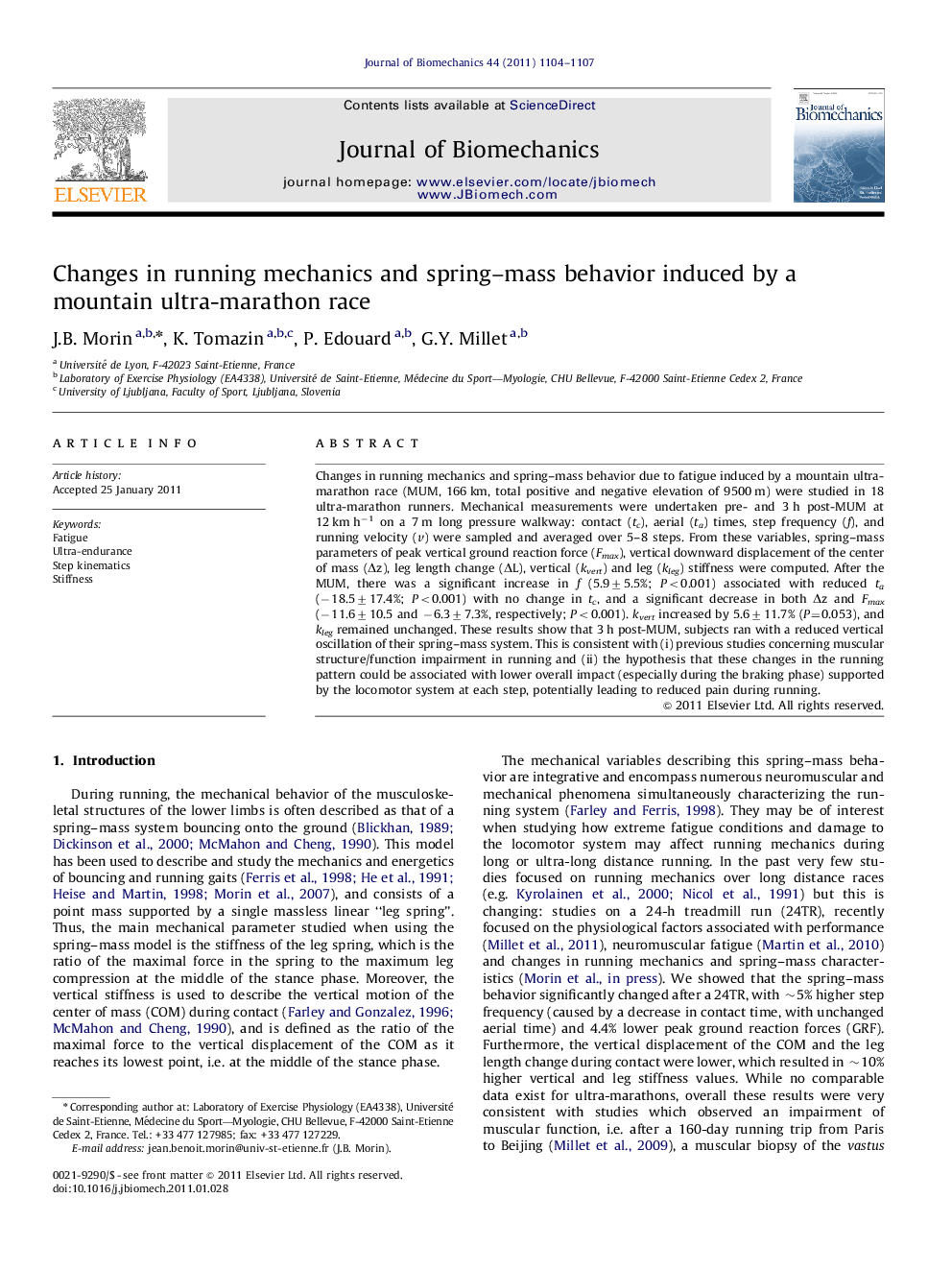| Article ID | Journal | Published Year | Pages | File Type |
|---|---|---|---|---|
| 10433368 | Journal of Biomechanics | 2011 | 4 Pages |
Abstract
Changes in running mechanics and spring-mass behavior due to fatigue induced by a mountain ultra-marathon race (MUM, 166 km, total positive and negative elevation of 9500 m) were studied in 18 ultra-marathon runners. Mechanical measurements were undertaken pre- and 3 h post-MUM at 12 km hâ1 on a 7 m long pressure walkway: contact (tc), aerial (ta) times, step frequency (f), and running velocity (v) were sampled and averaged over 5-8 steps. From these variables, spring-mass parameters of peak vertical ground reaction force (Fmax), vertical downward displacement of the center of mass (Îz), leg length change (ÎL), vertical (kvert) and leg (kleg) stiffness were computed. After the MUM, there was a significant increase in f (5.9±5.5%; P<0.001) associated with reduced ta (â18.5±17.4%; P<0.001) with no change in tc, and a significant decrease in both Îz and Fmax (â11.6±10.5 and â6.3±7.3%, respectively; P<0.001). kvert increased by 5.6±11.7% (P=0.053), and kleg remained unchanged. These results show that 3 h post-MUM, subjects ran with a reduced vertical oscillation of their spring-mass system. This is consistent with (i) previous studies concerning muscular structure/function impairment in running and (ii) the hypothesis that these changes in the running pattern could be associated with lower overall impact (especially during the braking phase) supported by the locomotor system at each step, potentially leading to reduced pain during running.
Related Topics
Physical Sciences and Engineering
Engineering
Biomedical Engineering
Authors
J.B. Morin, K. Tomazin, P. Edouard, G.Y. Millet,
